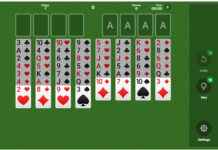It is one of the most iconic paintings of the 20th century: Henri Matisse’s “The Red Studio”, his portrayal of his studio filled with sculptures and paintings, including a plate.
Ann Temkin, curator at the Museum of Modern Art in New York, said that Matisse is sharing his world with us. He’s inviting us into his private space. Nearly all of the paintings in “The Red Studio” have been reunited for the first time since Matisse’s creation.
One of them is “Le Luxe II”
The “Red Studio” also features “The Young Sailor II”, which is featured in the “Red Studio”. It was created by a young fisherman. If you look at [Red Studio], that young sailor doesn’t have eyes or mouth. The eyes and mouth in the painting are amazing. He has softened the presence in the picture of the young sailor, so that it doesn’t dominate the scene. It blends in with the other pictures.”
Matisse is today regarded as a pioneer in modern art development. However, Matisse’s 1911 painting of the same subject was created in his new studio just outside Paris, Issy–les-Moulineaux. His work wasn’t widely acclaimed, even among the art community.
Temkin said, “It’s almost impossible to us, 100 years later. We can’t wrap our minds around how reviled, disparaged an artist such as Matisse was when was he 40 years old.”
Sergei Shchukin, a Russian wealthy man, commissioned “The Red Studio”. He also collected other Matisse works. Temkin saw the picture and said that he didn’t understand what it was. What were the elements that didn’t appear to have background or foreground in this painting? He rejected the painting.”
Matisse believed in it and showed it at numerous exhibits, including the New York Armory Show in 1913. It was eventually purchased by a London nightclub in 1927. The work ended up in New York where it was bought for $29,000 two decades later. It is considered to be priceless today, Temkin stated.
Analyses in the museum’s laboratory show that “Red Studio”, although it was always red, were not possible. You can see layers of an older version with sections in orange, pink, and blue underneath. This was before Matisse added red to everything.
“Did it happen impulsively?” Did he struggle with it for a few weeks before finally deciding to do it? Temkin agreed. Temkin said, “But the truth is, once he did that, there was no going back.”
It took nearly four years to track down all the works depicted in the painting. One of the cyclamen plants is in private collection and has not been seen since 1965.
Temkin answered, “We were very lucky.” The agreement was reached immediately. It was clear that this exhibition would not have been possible without one “no”. We are so grateful for everyone who came on board.
More information:
Story by Sara Kugel Chad Cardin is the editor.
Also see:








